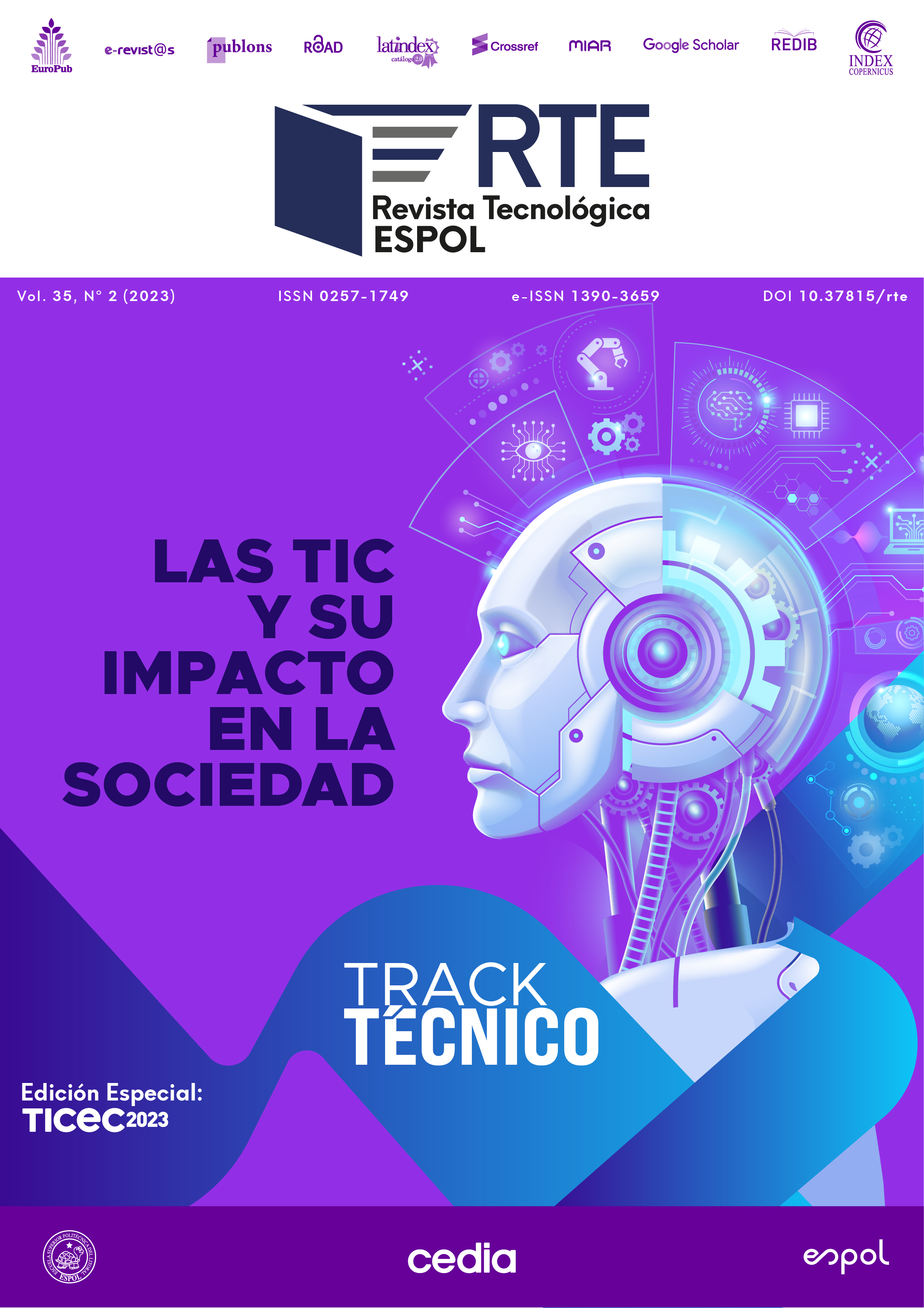To achieve a more accurate assessment of air quality, it is necessary to know the relationship between meteorological variables and the different air pollutants; this will also be aimed at avoiding the risks present both in the ecosystem and in human health in the future. The problem begins with finding an association between air pollutants and meteorological variables in the models and categorization methods that can be used. Due to this reason, the objective of this article is to analyze the quality of the associations between pollutants and meteorological variables by seasonality using decision trees to find knowledge that allows locating patterns that will be important for environmental analysis. Therefore, it was possible to achieve a periodic control of the quality of the associations of pollutants and meteorological variables, whose validation of the confidence level of the association rules is greater than 70% in the months studied.

This work is licensed under a Creative Commons Attribution-NonCommercial 4.0 International License.
References
Ahmed, H. W., & Alamire, D. J. H. (2020). Labelling Data for Correlation Pollution Dataset by Using Machine Learning. Journal of Physics: Conference Series, 1530(1), 012028. https://doi.org/10.1088/1742-6596/1530/1/012028
Alsagheer, R. H. A., Alharan, A. F. H., & Al-Haboobi, A. S. A. (2017). Popular Decision Tree Algorithms of Data Mining Techniques: A Review. International Journal of Computer Science and Mobile Computing, 6(6), 133-142.
Althuwaynee, O. F., Balogun, A., & Al Madhoun, W. (2020). Air pollution hazard assessment using decision tree algorithms and bivariate probability cluster polar function: evaluating inter-correlation clusters of PM10 and other air pollutants. GIScience & Remote Sensing, 57(2), 207-226. https://doi.org/10.1080/15481603.2020.1712064
Athira, V., Geetha, P., Vinayakumar, R., & Soman, K. P. (2018). DeepAirNet: Applying Recurrent Networks for Air Quality Prediction. Procedia Computer Science, 132, 1394-1403. https://doi.org/10.1016/j.procs.2018.05.068
Birant, D. (2011). Comparison of Decision Tree Algorithms for Predicting Potential Air Pollutant Emissions with Data Mining Models. Journal of Environmental Informatics, 17(1), 46-53. https://doi.org/10.3808/jei.201100186
García-Ojeda, J. C., Alvites, J. A., & Puello, P. (2020). Cuantificación de la contaminación por dióxido de carbono producida por empresas courier usando minería de datos: una mirada a las provincias de Lima y Constitucional del Callao (Colombia). Revista ESPACIOS, 41(41), 1015.
Gayathri, M., Shankar, R., & Duraisamy, S. (2020). Air pollution prediction using data mining technique. International Research Journal of Engineering and Technology (IRJET), 7(8), 4292-4297.
Hemada, B., & Vijaya Lakshmi, K. S. (2013). A Study On Discretization Techniques. International Journal of Engineering Research & Technology, 2(8).
Huang, C.-J., & Kuo, P.-H. (2018). A Deep CNN-LSTM Model for Particulate Matter (PM2.5) Forecasting in Smart Cities. Sensors, 18(7), 2220. https://doi.org/10.3390/s18072220
Manisalidis, I., Stavropoulou, E., Stavropoulos, A., & Bezirtzoglou, E. (2020). Environmental and health impacts of air pollution: a review. Frontiers in public health, 8, 14.
Martínez-España, R., Bueno-Crespo, A., Soto, J., Muñoz, A., & Cecilia, J. (2018). Air-Pollution Prediction in Smart Cities through Machine Learning Methods: A Case of Study in Murcia, Spain. Journal of Universal Computer Science, 24(3), 261-276.
Orellana, M., Salto, J., & Cedillo, P. (2021). Behavior Analysis of Atmospheric Components and Meteorological Variables Applying Data Mining Association Techniques. En Proceedings of the 2021 Future of Information and Communication Conference (FICC) (Vol. 2, pp. 192-204). Springer, Cham. https://doi.org/10.1007/978-3-030-73103-8_12
Siwek, K., & Osowski, S. (2016). Data mining methods for prediction of air pollution. International Journal of Applied Mathematics and Computer Science, 26(2), 467-478. https://doi.org/10.1515/amcs-2016-0033
Whiteman, C. D., Hoch, S. W., Horel, J. D., & Charland, A. (2014). Relationship between particulate air pollution and meteorological variables in Utah’s Salt Lake Valley. Atmospheric Environment, 94, 742-753. https://doi.org/10.1016/j.atmosenv.2014.06.012







